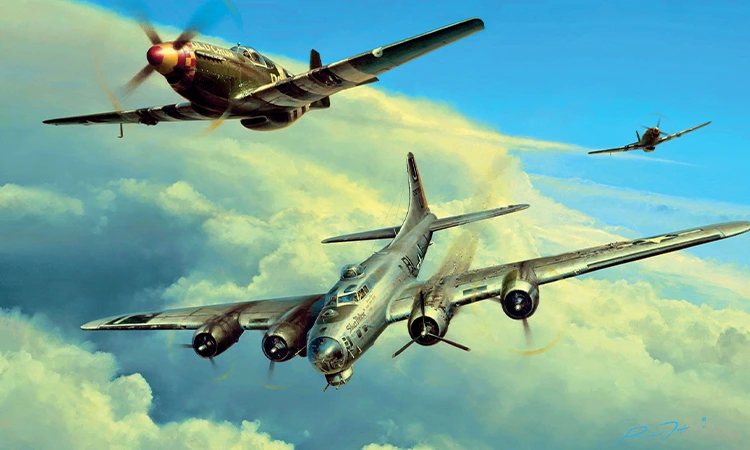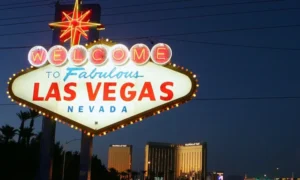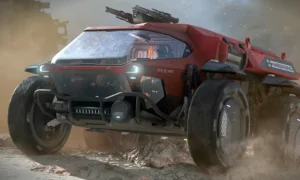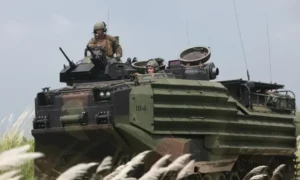When we refer to the German Luftwaffe of World War Two, minds instantly start imagining the Stuka’s shriek, the bombs of the Heinkel, or the silhouette of a Dornier swooping over London. But few look back and raise the question that decided if those bombers were to come back home or not — who was protecting them in the skies?
Bomber escort missions were more than a aside to Luftwaffe operations. They were in between victory and destruction. While Germany initially employed fast, solo bombers to outrun defensive fighters, it was only a matter of time before Allied air power most notably the Royal Air Force and later the U.S. Army Air Forces established that no bomber flies safely alone.
In came the escort fighters. They were not flashy dogfighting aces on the prowl for air battles. They were combat shields, escorting heavy bombers over hostile skies, prolonging their lives long enough to release their bombs and return home. They were stream-lined single-engine interceptors like the Bf 109 and heavier, bulkier fighter planes like the Bf 110, meant for longer ranges and more firepower.
In this blog, we examine in detail the aircraft that escorted German bombers, the squadrons that flew them, and Luftwaffe escort strategy evolution during the war. We will examine why these missions were so tough, which aircraft were capable of getting the job done, and how Luftwaffe strategy differed from the Allies.
For each bomber formation which crossed enemy lines, there was a crew in a second aircraft watching its back and without whom the Luftwaffe would have crashed earlier and more heavily than it did.
Early War Escorts – Heavy Fighters as Bomber Guards
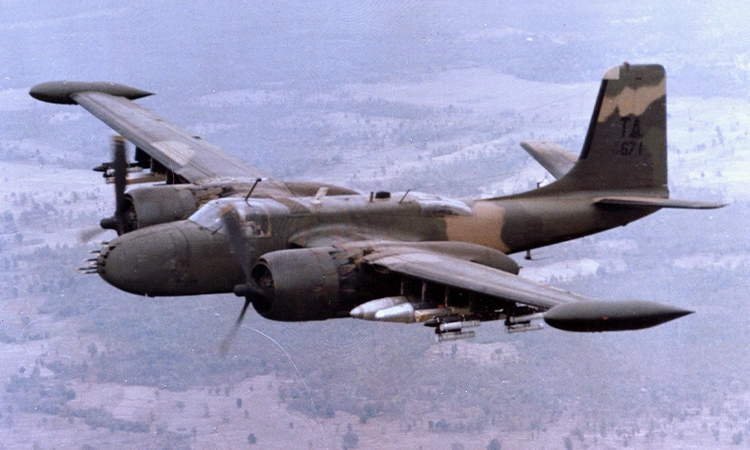
The Luftwaffe started the Second World War with unwavering confidence. Its doctrine was to build fast, well-armed bombers with little to no fighter escort and blow through the defenses of the enemy. The theory was simple: hit hard, move fast, and get ahead of the reaction of the enemy. That theory began to fall apart sooner than later.
In the initial campaigns from the Polish invasion up to the Blitz against Britain — German bomber groups had to face increasing danger from coordinated Allied fighter opposition. The Luftwaffe would soon discover that bombers alone, no matter how speedy and well-armed, were not going to last long over enemy skies.
They countered this with the use of heavy twin-engine fighter planes, first among them the Messerschmitt Bf 110. The Bf 110 was intended as a long-range “destroyer” aircraft, with multiple crew, heavy armament, and enough fuel to escort bombers deep into the enemy’s territory. It was fast in a linear way, well-armed with cannons and machine guns, and theoretically capable of cutting a swath ahead of the bombers or guarding their six.
But theory fell in conflict with reality when the Battle of Britain was waged. British Spitfires and Hurricanes outmaneuvered the Bf 110 with ease. The escort role turned into a liability. The Bf 110 was now a target, not a shield, and drove bomber formations into even more vulnerable positions. Losses increased, and the Luftwaffe was forced to alter its strategy.
Still in those early years the Bf 110 was a crucial part of Germany’s early aerial victories.
In less congested skies over France, Norway, or the Balkans, say its endurance and firepower made it perfect escort for bombers and enemy fighter killer. Even in some missions, it functioned as a pathfinder or tactical ground attack aircraft.
The early reliance on heavy fighters was a unique phase in Luftwaffe escort doctrine — one of optimism, tried and proved by experience, and eventually replaced by more flexible, single-engine substitutes. Without, however, the lessons afforded by the Bf 110, the Luftwaffe would have performed still sooner.
Main Luftwaffe Escort Aircraft – Roles and Ranges
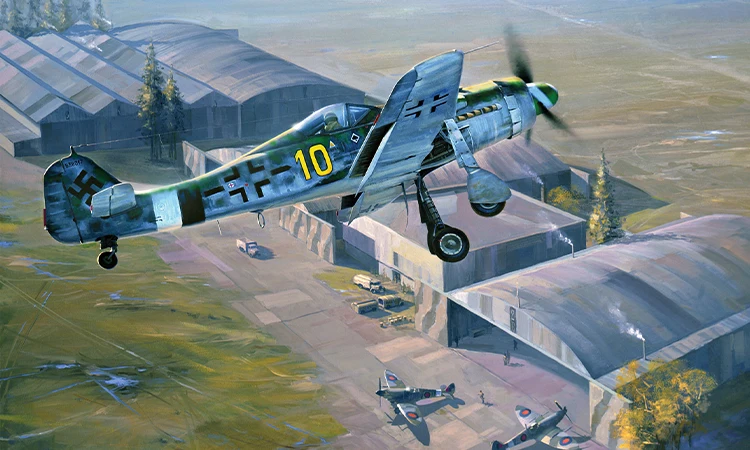
As the Luftwaffe scrambled to keep up with the chaos of WWII air combat, they basically threw everything but the kitchen sink at the problem of bomber escorts. Every fighter they rolled out had its own quirks some zipped along like rockets, others packed a punch, and a few just… ran out of gas way too fast.
Let’s break down the main German escort fighters, warts and all:
1. Messerschmitt Bf 109
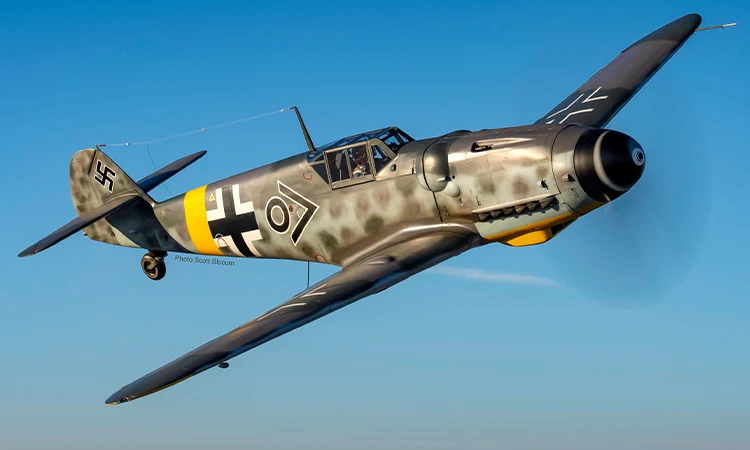
The classic. This was your go-to, bread-and-butter short to medium-range escort. Without extra fuel tanks strapped on, it could only stretch its legs about 850 kilometers. Great at climbing, could turn on a dime, and those guns? Nasty. Problem was, it guzzled fuel and wasn’t great for long road trips. They tried bolting on drop tanks later, which helped, especially over Italy and the Eastern Front, but it was always fighting against a tiny gas tank.
2. Messerschmitt Bf 110
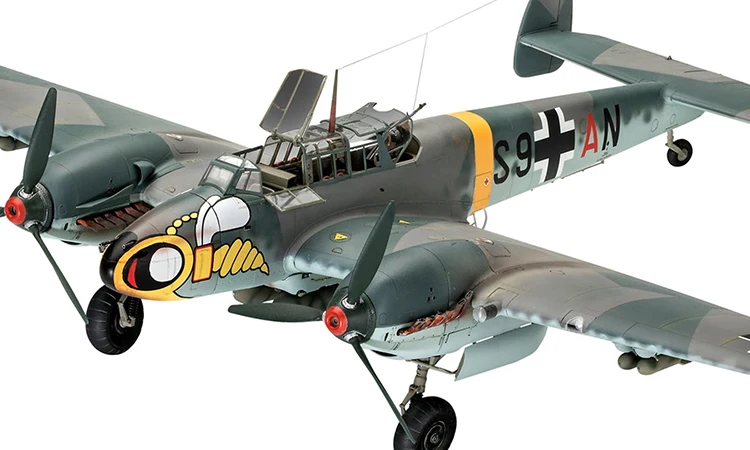
Now here’s the “big guy” of the bunch. Twin engines, multiple crew—felt more like a flying gun bus sometimes. Decent range, over 1,000 kilometers, and could lay down some serious fire. Trouble started when it had to mix it up with nimble single-engine opponents. Just couldn’t keep up in a dogfight. Got chewed up over England during the Battle of Britain, so it spent the rest of the war sneaking around at night or blowing up stuff on the ground.
3. Focke-Wulf Fw 190

This one’s a bit of a beast. Came in mid-war and could do pretty much anything—escort, dogfight, even bomb runs. Depending on how much extra fuel it carried, range was between 800 and 1,200 kilometers. Had a chunky radial engine that could take a beating, and the firepower was no joke. Early versions sucked at high altitude, but later ones were absolute murder against Allied bombers, especially over the Eastern Front or defending German skies.
4. Messerschmitt Me 410 Hornisse
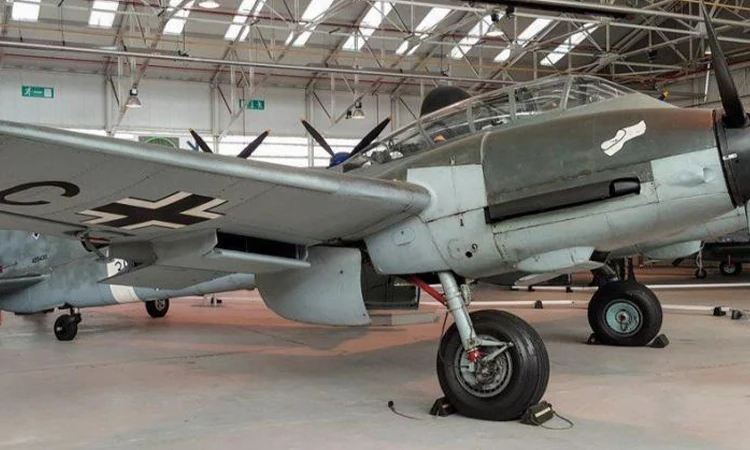
The Me 410 was a twin-engine hot rod with some serious bite. Could fly up to 1,500 kilometers, which is pretty decent. Up front, it had heavy cannons that could tear through bomber formations. Not a ton were built, though, and if a nimble Allied fighter jumped it, things went south quick. Saw most of its action late in the war, deep into enemy territory, trying to swat bombers out of the sky.
5. Messerschmitt Me 262 Schwalbe
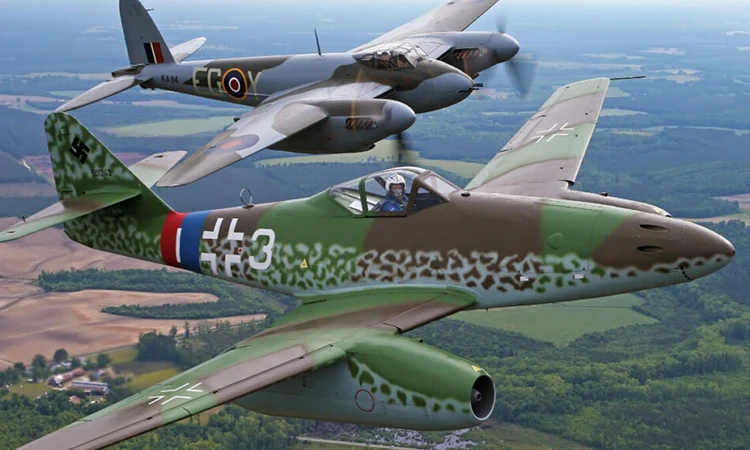
Okay, this one’s the show-off. The world’s first operational jet fighter—ridiculously fast, heavily armed, looked like something from a sci-fi comic. Range wasn’t amazing (about 1,050 kilometers), and the engines were notoriously temperamental. Plus, it was a sitting duck on takeoff and landing. Still, when it worked, it could tear through Allied bomber streams. Came in too late and in too few numbers to really turn the tide, but it definitely freaked out the Allies.
So yeah the Luftwaffe’s escort fighter game was a wild ride from cocky twin engine “bomber destroyers” to desperate, last-ditch jets. Each plane tells its own story of trial, error, and, honestly a fair bit of panic as Germany tried to keep its bombers alive in a sky that just kept getting meaner.
Main Luftwaffe Escort Aircraft – Roles and Ranges
| Escort Aircraft | Range (km) | Key Strength | Notable Weakness |
|---|---|---|---|
| Messerschmitt Bf 109 | ~850 (without drop tanks) | Agile & heavily armed | Short range limited escort use |
| Messerschmitt Bf 110 | ~1,000 | Heavy firepower & endurance | Vulnerable to agile fighters |
| Focke-Wulf Fw 190 | 800–1,200 | Rugged & versatile | Early models struggled at altitude |
| Messerschmitt Me 410 | ~1,500 | Strong bomber killer | Limited numbers; not agile |
| Messerschmitt Me 262 | ~1,050 | Jet-speed & superior armament | Unreliable engines; too few |
Unit Focus – Bomber Wings and Escort Wings
Bomber escorts? Yeah, it’s not just about the planes zipping around up there—it’s about the guys actually flying them, the units behind all that action. The Luftwaffe didn’t just throw any random group into the mix. They had specific squadrons for this stuff. Some were all-in on escorting bombers or hunting down enemy planes, while others played double duty, flying bombing runs one day and fighter cover the next. If you’re into tracking down which squadron flew what, or you’re obsessed with finding the right insignia on a piece of wreckage, knowing your units is the real treasure map.
Let’s break down a few of the big names that were deep in the bomber escort game:
- Zerstörergeschwader 26 (ZG 26)
– Flew mostly Bf 110s—a chunky twin-engine fighter that looked mean but, honestly, struggled against nimbler fighters.
– Main job? Heavy fighter stuff, mainly escorting bombers in the early days.
– Saw action over Britain (yikes, rough crowd), the Balkans, and when things heated up on the Eastern Front.
– They got chewed up pretty bad over England, but early on, these guys were a big part of the Luftwaffe’s “twin-engine everything” plan.
- Zerstörergeschwader 1 (ZG 1)
– Started with Bf 110s, swapped in Me 410s later—think of it like upgrading from a minivan to a muscle car, but with wings.
– Did long-haul escort missions, then switched up to blasting enemy bombers when the Allied raids got crazy.
– Fought over the Reich and down in the Mediterranean.
– Their whole style shifted as the war went on. Escort one year, bomber hunter the next.
- Jagdgeschwader 1 (JG 1)
– Flew Bf 109s and later the Fw 190—both absolute classics.
– Not just escorts. These guys were the all-rounders: defending German skies, running interference, and, yeah, escorting bombers when needed.
– Big reputation for racking up kills against Allied bombers, kind of the rockstars of interception.
– If there was a high-risk mission, chances are JG 1 had a piece of it.
- Jagdgeschwader 300 (JG 300)
– All about the Fw 190.
– Known for “Wilde Sau” tactics—basically wild night fighting, plus breaking up those tight Allied bomber boxes.
– Jumped in for quick raids and even did some daytime escort work.
– These guys were like the bouncers at the club, smashing up formations and helping out German bombers on wild rides.
- Kampfgeschwader 54 (KG 54) “Totenkopf”
– Their planes? Heinkel He 111s and Ju 88s. Straight-up bombers.
– Sometimes they’d bring fighters along for self-escort. Multi-taskers, you know?
– Hit targets all over—France, Russia, the Med.
– Their skull insignia looks wicked, but don’t get it twisted—it’s not the Jolly Rogers. They weren’t an escort squadron, but their missions almost always meant working shoulder-to-shoulder with the fighter boys.
Why This Matters to Today’s Historians and Collectors
You look at a list of bomber escort units and, yeah, at first it’s like, “Cool, another nerdy military list. Yawn.” But for folks who actually care—historians, collectors, people who dive way too deep into this stuff—it’s gold. Like, this is the DNA of the whole story.
Researchers? Oh, they freak out over this stuff. Knowing which planes flew escort, which units did what, it’s not just trivia—it’s how they piece together why certain missions crashed and burned or why some raids actually made it home. You read a Luftwaffe combat report, and if you don’t know who was flying cover, you’re missing half the picture. It’s all about the domino effect: new tactics, busted tech, the Allies getting better and better—those escort lists are the breadcrumbs.
Then you get the collectors in the mix. For them, it’s not just “Hey, look at this old airplane part.” Nah, if you can pin it to a specific squadron or even a particular plane, suddenly that hunk of metal’s got a story—and a way bigger price tag. There’s a world of difference between a battered Bf 110 from the Blitz days and a Me 410 that limped through ’44. One’s a museum piece; the other’s, I dunno, a holy grail for some guy’s display case.
But honestly, the best part? It’s the people. Every one of those missions had some crew risking it all to babysit bombers they didn’t even know. Not glamorous, not ace-pilot stuff, but without them, those bombers would’ve been toast. And yeah, that’s why these details matter. Every flight, every list—it’s a stack of stories just waiting for someone to remember them, instead of letting them fade into the background noise.
Final Thoughts
Let’s be real bomber escorts in WWII? They’re like the bass players of aerial warfare. Not exactly front and center, right? No dramatic dogfights for the cameras, no flashy medal ceremonies for lone-wolf heroics. Nah, these pilots just flew in tight, sweating it out shoulder-to-shoulder with bombers, taking flak and fighters so someone else could hit the target and, hopefully, make it back for a beer. If they’d called in sick? The Luftwaffe’s best bombing runs would’ve flopped way sooner, no question.
Digging into which planes pulled escort duty, which squadrons did the job, how tactics morphed over time it’s not just dry data. That’s how you stitch together the real tapestry of the war. Suddenly, some busted up flight jacket or a scribbled logbook isn’t just “stuff” it’s a slice of somebody’s wild, terrifying Tuesday in 1943. It’s all the bits and bobs that make history feel, well, alive.
And for the hardcore collectors, the warbird nerds, the folks who can spot an Me 110 tailwheel at fifty paces this stuff matters. That old patch? It’s not a patch anymore. It’s a legacy. That cockpit dial? A direct handshake with the past.
Which is honestly the whole reason we fired up miltrade.com. Not to flog cheap knockoffs or clutter your feed with junk, but to give real-deal enthusiasts a place to swap, hunt, and geek out over the kind of military collectibles that actually mean something. Want Luftwaffe squadron badges? Original flight records? A chunk of aluminum that once dodged flak over Berlin? That’s what miltrade’s here for. It’s where the real ones keep the stories alive.
FAQs
What kind of plane escorted German bombers in WWII?
Geez, the Luftwaffe didn’t exactly have one particular plane. You had from Bf 109s to Me 410s serving as escorts. Heck, even the Me 262 jet was included for good measure near the end of the war. Miltrade has some of these planes covered in part and squadron records.
Was the Bf 110 really effective as an escort?
At first, yeah. It had great range and guns. But once the Spitfires and Hurricanes showed up, things got ugly fast. I’ve seen crash-recovered Bf 110 parts on Miltrade — they tell the story better than words.
Why did Germany struggle with long-range escorts?
Fuel tanks, man. The majority of the Luftwaffe fighters just weren’t able to get to the end, especially into Allied depths. That’s why they then mounted drop tanks or employed more heavily loaded-out aircraft. If you like real tech innovations like this, Miltrade listings are a goldmine.
Did they have dedicated escort units like in the U.S. Air Force?
Kinda. Germany had specific groups like ZG 1 or JG 1 that flew cover often. But unlike the Americans, they weren’t always locked into that role. I’ve tracked a few original insignia patches on Miltrade — helps ID which squadron did what.
Why should collectors care about bomber escort units?
Because they tell the entire story. That Luftwaffe jacket or cockpit instrument? Knowing that it was from JG 300 on an escort mission into Russia makes it infinitely more valuable. That’s the kind of information that Miltrade helps you confirm.
